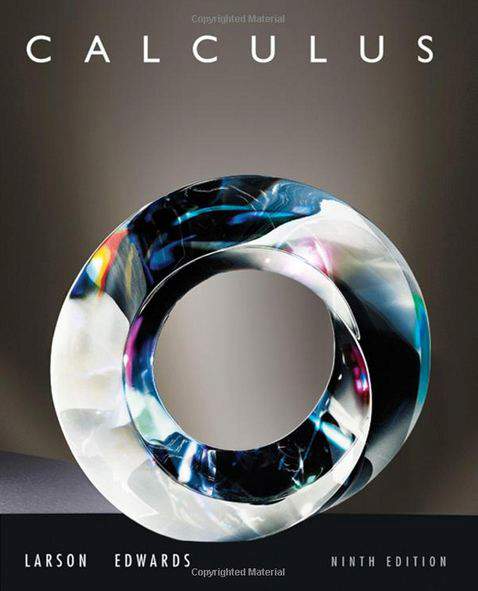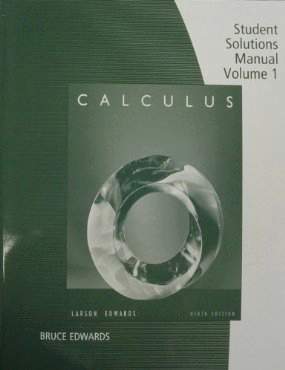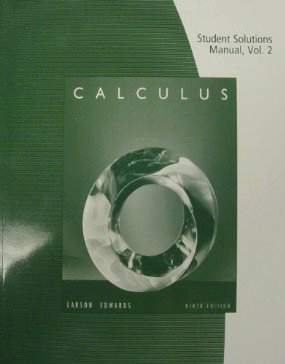

Professor Murray
Partial Fractions
Slide Duration:Table of Contents
24m 52s
- Intro0:00
- Important Equation0:07
- Where It Comes From (Product Rule)0:20
- Why Use It?0:35
- Lecture Example 11:24
- Lecture Example 23:30
- Shortcut: Tabular Integration7:34
- Example7:52
- Lecture Example 310:00
- Mnemonic: LIATE14:44
- Ln, Inverse, Algebra, Trigonometry, e15:38
- Additional Example 4-1
- Additional Example 5-2
25m 30s
- Intro0:00
- Important Equation0:07
- Powers (Odd and Even)0:19
- What To Do1:03
- Lecture Example 11:37
- Lecture Example 23:12
- Half-Angle Formulas6:16
- Both Powers Even6:31
- Lecture Example 37:06
- Lecture Example 410:59
- Additional Example 5-1
- Additional Example 6-2
30m 9s
- Intro0:00
- Important Equations0:06
- How They Work0:35
- Example1:45
- Remember: du and dx2:50
- Lecture Example 13:43
- Lecture Example 210:01
- Lecture Example 312:04
- Additional Example 4-1
- Additional Example 5-2
41m 22s
- Intro0:00
- Overview0:07
- Why Use It?0:18
- Lecture Example 11:21
- Lecture Example 26:52
- Lecture Example 313:28
- Additional Example 4-1
- Additional Example 5-2
20m
- Intro0:00
- Using Tables0:09
- Match Exactly0:32
- Lecture Example 11:16
- Lecture Example 25:28
- Lecture Example 38:51
- Additional Example 4-1
- Additional Example 5-2
22m 36s
- Intro0:00
- Trapezoidal Rule0:13
- Graphical Representation0:20
- How They Work1:08
- Formula1:47
- Why a Trapezoid?2:53
- Lecture Example 15:10
- Midpoint Rule8:23
- Why Midpoints?8:56
- Formula9:37
- Lecture Example 211:22
- Left/Right Endpoint Rule13:54
- Left Endpoint14:08
- Right Endpoint14:39
- Lecture Example 315:32
- Additional Example 4-1
- Additional Example 5-2
21m 8s
- Intro0:00
- Important Equation0:03
- Estimating Area0:28
- Difference from Previous Methods0:50
- General Principle1:09
- Lecture Example 13:49
- Lecture Example 26:32
- Lecture Example 39:07
- Additional Example 4-1
- Additional Example 5-2
44m 18s
- Intro0:00
- Horizontal and Vertical Asymptotes0:04
- Example: Horizontal0:16
- Formal Notation0:37
- Example: Vertical1:58
- Formal Notation2:29
- Lecture Example 15:01
- Lecture Example 27:41
- Lecture Example 311:32
- Lecture Example 415:49
- Formulas to Remember18:26
- Improper Integrals18:36
- Lecture Example 521:34
- Lecture Example 6 (Hidden Discontinuities)26:51
- Additional Example 7-1
- Additional Example 8-2
23m 20s
- Intro0:00
- Important Equation0:04
- Why It Works0:49
- Common Mistake1:21
- Lecture Example 12:14
- Lecture Example 26:26
- Lecture Example 310:49
- Additional Example 4-1
- Additional Example 5-2
28m 53s
- Intro0:00
- Important Equation0:05
- Surface Area0:38
- Relation to Arclength1:11
- Lecture Example 11:46
- Lecture Example 24:29
- Lecture Example 39:34
- Additional Example 4-1
- Additional Example 5-2
24m 37s
- Intro0:00
- Important Equation0:09
- Main Idea0:12
- Different Forces0:45
- Weight Density Constant1:10
- Variables (Depth and Width)2:21
- Lecture Example 13:28
- Additional Example 2-1
- Additional Example 3-2
25m 39s
- Intro0:00
- Important Equation0:07
- Main Idea0:25
- Centroid1:00
- Area1:28
- Lecture Example 11:44
- Lecture Example 26:13
- Lecture Example 310:04
- Additional Example 4-1
- Additional Example 5-2
22m 26s
- Intro0:00
- Important Equations0:05
- Slope of Tangent Line0:30
- Arc length1:03
- Lecture Example 11:40
- Lecture Example 24:23
- Lecture Example 38:38
- Additional Example 4-1
- Additional Example 5-2
30m 59s
- Intro0:00
- Important Equations0:05
- Polar Coordinates in Calculus0:42
- Area0:58
- Arc length1:41
- Lecture Example 12:14
- Lecture Example 24:12
- Lecture Example 310:06
- Additional Example 4-1
- Additional Example 5-2
31m 13s
- Intro0:00
- Definition and Theorem0:05
- Monotonically Increasing0:25
- Monotonically Decreasing0:40
- Monotonic0:48
- Bounded1:00
- Theorem1:11
- Lecture Example 11:31
- Lecture Example 211:06
- Lecture Example 314:03
- Additional Example 4-1
- Additional Example 5-2
31m 46s
- Intro0:00
- Important Definitions0:05
- Sigma Notation0:13
- Sequence of Partial Sums0:30
- Converging to a Limit1:49
- Diverging to Infinite2:20
- Geometric Series2:40
- Common Ratio2:47
- Sum of a Geometric Series3:09
- Test for Divergence5:11
- Not for Convergence6:06
- Lecture Example 18:32
- Lecture Example 210:25
- Lecture Example 316:26
- Additional Example 4-1
- Additional Example 5-2
23m 26s
- Intro0:00
- Important Theorem and Definition0:05
- Three Conditions0:25
- Converging and Diverging0:51
- P-Series1:11
- Lecture Example 12:19
- Lecture Example 25:08
- Lecture Example 36:38
- Additional Example 4-1
- Additional Example 5-2
22m 44s
- Intro0:00
- Important Tests0:01
- Comparison Test0:22
- Limit Comparison Test1:05
- Lecture Example 11:44
- Lecture Example 23:52
- Lecture Example 36:01
- Lecture Example 410:04
- Additional Example 5-1
- Additional Example 6-2
25m 26s
- Intro0:00
- Main Theorems0:05
- Alternation Series Test (Leibniz)0:11
- How It Works0:26
- Two Conditions0:46
- Never Use for Divergence1:12
- Estimates of Sums1:50
- Lecture Example 13:19
- Lecture Example 24:46
- Lecture Example 36:28
- Additional Example 4-1
- Additional Example 5-2
33m 27s
- Intro0:00
- Theorems and Definitions0:06
- Two Common Questions0:17
- Absolutely Convergent0:45
- Conditionally Convergent1:18
- Divergent1:51
- Missing Case2:02
- Ratio Test3:07
- Root Test4:45
- Lecture Example 15:46
- Lecture Example 29:23
- Lecture Example 313:13
- Additional Example 4-1
- Additional Example 5-2
38m 36s
- Intro0:00
- Main Definitions and Pattern0:07
- What Is The Point0:22
- Radius of Convergence Pattern0:45
- Interval of Convergence2:42
- Lecture Example 13:24
- Lecture Example 210:55
- Lecture Example 314:44
- Additional Example 4-1
- Additional Example 5-2
30m 18s
- Intro0:00
- Taylor and Maclaurin Series0:08
- Taylor Series0:12
- Maclaurin Series0:59
- Taylor Polynomial1:20
- Lecture Example 12:35
- Lecture Example 26:51
- Lecture Example 311:38
- Lecture Example 417:29
- Additional Example 5-1
- Additional Example 6-2
50m 50s
- Intro0:00
- Main Formulas0:06
- Alternating Series Error Bound0:28
- Taylor's Remainder Theorem1:18
- Lecture Example 13:09
- Lecture Example 29:08
- Lecture Example 317:35
- Additional Example 4-1
- Additional Example 5-2
For more information, please see full course syllabus of College Calculus: Level II
College Calculus: Level II Partial Fractions
In this tutorial we are going to learn about Partial Fractions. Partial fractions is a technique used to solve integrals but it is really grounded in algebra. So, we are going to be doing a lot of algebra and not that much integration. The point of partial fractions is to solve integrals where we have something like one polynomial, or maybe just a constant, divided by another polynomial. What we are going to do is factor the denominator polynomial and then we will do some algebra to separate this fraction into other pieces, into simpler fractions that are supposed to be easier to integrate.
Share this knowledge with your friends!
Copy & Paste this embed code into your website’s HTML
Please ensure that your website editor is in text mode when you paste the code.(In Wordpress, the mode button is on the top right corner.)
- - Allow users to view the embedded video in full-size.










































 Answer Engine
Answer Engine

 .
.





1 answer
Wed May 29, 2024 1:37 PM
Post by Nana kwame Afreh sika on May 18, 2024
Also here i have trouble playing the video of example 4
1 answer
Sat Jan 6, 2018 6:25 PM
Post by Sander Raes on January 3, 2018
I cannot see the additional examples, when i click on them i do see the integral itself but there is no video, also in the left box with the topics (example 2, lecture example 3...) there are no minutes next to the additional lectures. don't know or this is only me
3 answers
Mon Sep 5, 2016 9:46 AM
Post by Peter Ke on July 27, 2016
For example 3, just a curious question what happens if you square the x-3 under the A? So it will be A/(x-3)^2? Will you still get the same answer?
1 answer
Thu Aug 13, 2015 8:51 PM
Post by Micheal Bingham on July 31, 2015
How do we know whether to use partial fractions or to complete the square? For the first question I used the method for completing the square and used a trigonometric substitution and came to a completely different answer.
3 answers
Tue Feb 11, 2014 4:07 PM
Post by Angela Patrick on January 27, 2014
professor could you contact educator and correct some of the practice questions. On one the the answer is simplified incorrectly and on another they say 6=4b so b=2/3
1 answer
Mon Oct 21, 2013 8:02 PM
Post by Ana Moga on October 20, 2013
Thanks for the great lectures ...you are an amazing Prof.
I have a quick naive request: do you mind clarifying how do you get (x+2)^2 +1 from x^2+4x+5 (example IV- minute 4:35) :) thank you very much for your time and help
1 answer
Fri Jul 5, 2013 9:07 AM
Post by William Dawson on June 25, 2013
The algebra is definitely the hardest part, and it's always good to show it if it involves any significant rearrangement. There is nothing 'elementary' about algebra at this level either, whatever some _____ might say in the responses, in trying to be cute.
2 answers
Mon May 13, 2013 10:42 AM
Post by Megan Kell on February 16, 2012
When he moved from (A+B)x = 5x and -4A-2B = -16 to A+B = 5 and -4A-2B = 16, he forgot the negative sign on the 16. Is this correct, or am I missing something?
1 answer
Mon May 13, 2013 10:38 AM
Post by Kathy Hodge on November 7, 2011
For drill problems on Integration by Parts and other integration techniques, go to
http://archives.math.utk.edu/visual.calculus/4/index.html
However, they don't go into this topic in as much depth -- or as many types of denominators as Professor Murray.
1 answer
Mon May 13, 2013 10:34 AM
Post by ahmed hassan on May 1, 2011
You can skip all the steps and give us the answer!!
1 answer
Mon May 13, 2013 10:29 AM
Post by Daniel Brook on February 21, 2011
Thanks professor, your algebraic technique of sperating A and B was different from the way I learned in class and it was really helpful.
1 answer
Mon May 13, 2013 10:24 AM
Post by James Reaper on February 27, 2010
In example 2 the negative sign wasn't carried through or dropped by dividing by -1.
2 answers
Sun Sep 9, 2012 9:02 PM
Post by lynette stevenson on February 16, 2010
excellent professor, however he skipped steps he should explain the algerbra in more detail